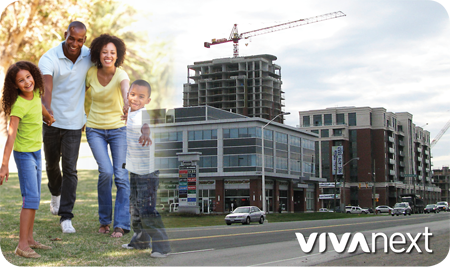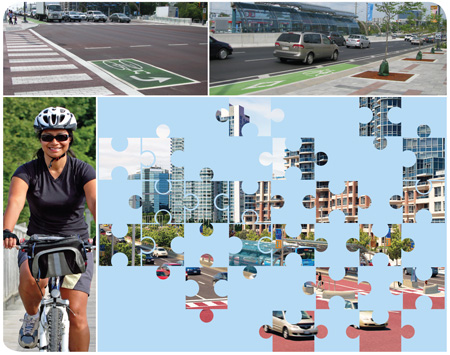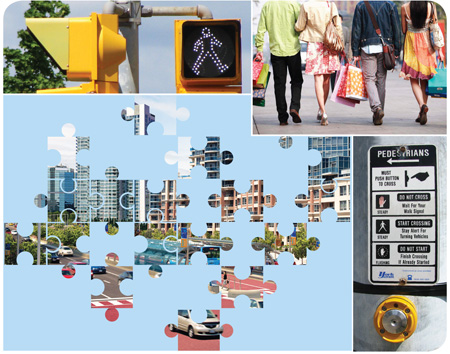The most obvious benefit that vivaNext will provide, and one that is already taking shape on Highway 7, is the convenient rapid transit system that we’re constructing across York Region. But as I’ve described in many previous posts, vivaNext is much more than a transit project; it’s also a key part of the long-term strategy being used by York Region to help our Region respond to and manage growth. Central to that strategy is the overall vision of Centres and Corridors, which will help concentrate future growth in higher-density, mixed use developments clustered in four new urban nodes, one each in Markham, Newmarket, Richmond Hill and Vaughan. Here’s a summary of how this strategy will transform our Region and help it manage growth.
Population increase is happening across the Region, and brings many advantages. More people means the Region can attract and support new choices in housing, employment, shopping, entertainment, dining and recreation. But as the Region grows, more people also means more traffic, more congestion, and more crowding. So the strategy that York Region has developed, in collaboration with both the Province and the local municipalities, is to channel much of that growth into newly developed communities clustered in new urban centres along Highway 7 and in Newmarket. With this strategy, existing neighbourhoods will be protected, along with the way of life that attracted many people to the Region in the first place.
The new communities in the Regional Centres will be mixed use, meaning they will offer residential, employment and recreational options – including a proportion of affordable housing choices. Once these new downtowns are fully established, people will be able to work, live and play without needing to get in a car, enjoying choices for housing, jobs, shopping and dining, all within walking distance.
Linking these emerging downtowns will be major transportation corridors along Highway 7, Yonge Street and Davis Drive, featuring our new vivaNext bus rapid transit rapidways and the Spadina subway extension (and once funding is secured, the Yonge Subway extension). With convenient access between these new urban neighbourhoods and our expanding rapid transit network, people will be able to travel across the Region and into the rest of the GTA without needing a car, making the Centres an attractive option for people looking for an urban lifestyle.
Obviously, completing York Region’s new downtowns isn’t going to happen overnight, but new developments are already transforming the look and feel along Highway 7, up Yonge Street and across Davis Drive. And as these new urban areas take shape, we’re working hard to get the transit part of the equation built, one rapidway station at a time – to provide a convenient, fast way for everyone in York Region to get around using transit.










